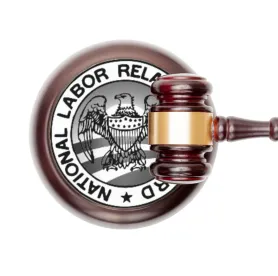In a hotly-anticipated decision, The Atlanta Opera, Inc., 372 NLRB No. 95 (2023), the National Labor Relations Board (“NLRB” or “Board”) overturned the existing legal standard for determining whether a worker is an employee or an independent contractor for purposes of the National Labor Relations Act (“NLRA”). Employees have rights under the NLRA, including the right to join a union, whereas independent contractors do not. The Board has returned to a former standard making it easier for workers to establish “employee” status.
Legal Background
The NLRA explicitly excludes independent contractors from coverage under the Act. In a 1968 decision, NLRB v. United Insurance Co. of America, 390 U.S. 254 (1968), the Supreme Court held that the common-law agency test applied to employee-independent contractor classifications under the NLRA. The Court specified that in determining whether a worker is an employee or an independent contractor under the common-law test, “all of the incidents of the relationship must be assessed and weighed with no one factor being decisive.” In later decisions applying the common-law agency test to worker classification questions, the Supreme Court employed Section 220(2) of the Restatement (Second) of Agency—a non-exhaustive, multifactor test—as authoritative guidance to determine whether a worker is acting as an employee or independent contractor.
In a 1998 case, Roadway Package System, 326 NLRB 842 (1998), the Board endorsed the use of the Restatement test in classification questions. In addition to those factors enumerated in the Restatement test, the Board added as an additional factor whether putative independent contractors have a significant entrepreneurial opportunity for gain or loss—assessing whether purported contractors have the ability to work for other companies, could hire their own employees, and have a proprietary interest in their work.
FedEx and SuperShuttle
In FedEx Home Delivery v. NLRB, 563 F.3d 492 (D.C. Cir. 2009), the D.C. Circuit elevated entrepreneurial opportunity in the classification analysis, treating it as an “animating principle” by which to evaluate the factors of the common-law agency test. In response to that decision, in FedEx II, the Board rejected the approach adopted by the D.C. Circuit, and clarified that entrepreneurial opportunity is one factor to consider—along with the common-law agency principles as articulated in the Restatement—but was not dispositive.
Several years later, in SuperShuttle DFW, Inc., 367 NLRB No. 75 (2019), the Board adopted the D.C. Circuit’s view from FedEx as its own position, holding that “entrepreneurial opportunity…has always been at the core of the common-law test” and, accordingly, “is a principle by which to evaluate the overall effect of the common-law factors on a putative contractor’s independence to pursue economic gain.”
The Atlanta Opera, Inc.
Make-up Artists and Hair Stylists Union, Local 798, IATSE filed a petition to represent a group of makeup artists, wig artists, and hair stylists as their exclusive bargaining representative, prompting the Board to consider whether the workers were employees of The Atlanta Opera or independent contractors. The NLRB invited public input on the key issues, asking interested amici to provide responses to the following two questions:
-
Should the Board adhere to the independent-contractor standard in SuperShuttle?
-
If not, what standard should replace it? Should the Board return to the standard in FedEx II, either in its entirety or with modifications?
There, the Board decided to overrule SuperShuttle and reinstate its approach from FedEx II, finding, in particular, that the Board has never afforded special weight or significance to “entrepreneurial opportunity,” and that such an approach is at odds with common-law principles and the Supreme Court’s decision in United Insurance. Applying that standard, the Board found the workers to be statutory employees under the NLRA. More specifically, to determine whether a worker is an employee protected by the NLRA or an independent contractor not covered by the Act, the Board engages in a two-part analysis:
First, the Board will evaluate independent contractor status by considering all aspects of the worker-business relationship in light of common-law agency principles with no one factor being determinative. The factors are as follows:
-
The extent of control which, by the agreement, the master may exercise over the details of the work;
-
Whether or not the one employed is engaged in a distinct occupation or business;
-
The kind of occupation, with reference to whether, in the locality, the work is usually done under the direction of the employer or by a specialist without supervision;
-
The skill required in the particular occupation;
-
Whether the employer or the workman supplies the instrumentalities, tools, and the place of work for the person doing the work;
-
The length of time for which the person is employed;
-
The method payment, whether by the time or by the job;
-
Whether or not the work is a part of the regular business of the employee;
-
Whether or not the parties believe they are creating the relation of master and servant; and
-
Whether the principal is or is not in business.
Second, the Board will consider evidence of entrepreneurial opportunity when assessing whether a putative contractor is rendering service as part of an independent business. This “independent business” analysis will consider not only whether the putative contractor has a significant entrepreneurial opportunity, but also whether the putative contractor:
-
Has a realistic ability to work for other companies;
-
Has proprietary or ownership interest in their work;
-
And has control over important business decisions, such as the scheduling of performance; the hiring, selection, and assignment of employees; the purchase and use of equipment; and the commitment of capital.
Takeaways
The now-applicable standard for determining employee or contractor status involves a holistic consideration of all factors, without one being dispositive. As a practical matter, it will likely make it easier for employees to dispel the notion that they are independent contractors outside the scope of the Act, because it allows employees (and potentially, unions) to point to a number of factors that demonstrate they are instead employees with rights under the NLRA.
We will continue to monitor how the Board, ALJs, and Regions apply this standard to fact patterns presented, and whether this, in fact, results in more employee findings than under the prior standard. We also note that, under current Board law, misclassifying employees as independent contractors is not an independent unfair labor practice, but that is an issue on General Counsel Jennifer Abruzzo’s agenda for reversal.





 />i
/>i

